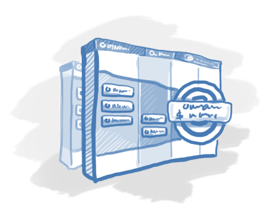Within sales strategies, the use of BANT—an acronym for Budget, Authority, Need and Timing—has been around for decades. Salespeople throughout the world memorize this acronym and mentally run through it whenever qualifying an opportunity, and sales management routinely preach it so that salespeople will remember it.
Within each of these four elements, however, there is almost a mini-pipeline of data to be gathered so that each will be fully answered.
 Budget
Budget
The first thing to know when sounding out a prospect company, of course, is if there is a budget available. In plain terms, do they have the money? This is the most basic qualification of a prospect. So early on the salesperson should discover if the budget is available to be allocated for this particular purchase.
This can be asked about in such a way that you can find out before spending valuable time and effort chasing down and closing the sale. This can be a question such as, “If our solution solves your needs, will funding be available to move it forward?”
You’re also going to want to know the process for getting the funding approved—that is, the decision-making process. You’ll want as much detail on this process as you can get, because you’re probably going to have to gently but firmly coax your contact to push through the approval.
Authority
As with all four of these factors, this one should be answered as close to the beginning of the sales cycle as possible. To wit: Does the person with whom you are in contact have the authority to make this purchase?
In most cases the answer to this question will be “no” and that person will have to submit the purchase to another or others for approval. In that case you’re going to want to know who will be the ultimate authority—or, if more than one person, authorities. You can then work out with your contact whether your direct contact is going to be needed to deal with the approving entity, or if you will be needed as a tag to close them. If you will have no ability to have direct contact, you will need to supply your contact with the necessary information to close the deal in your stead.
Need
The question of need will be the actual force that will motivate your potential sale through to approval and purchase by the target company. The higher the need, the more your contact—and everyone else in the approval process—will be motivated to obtain your product or service.
Firmly establishing this need will be in part up to the prospect company but mostly up to you. They usually start off considering they need a product like yours. It is up to you to find out why and how deep that need actually goes. It then becomes your job to clearly illustrate to your prospect how well your product or service satisfies that need. This is the very essence of closing a sale, and more broadly is also a vital part of all sales strategies.
It may happen that your initial contact simply knows, “We need a product like yours” and actually doesn’t know the total reason for it. You should either get him or her to find out, or find out yourself.
Timeframe
Along with all the information above you are of course going to want to know how long this sales cycle is going to take. This begins with the timeframe they’ve already established (most have) for purchasing and/or implementing a product or service such as yours.
This is a vital piece of information as they might not even truly be in the market for your product until next year, and they’re just gathering information at the present time. In such a case you’ll want to note when they’ll actually be ready to talk and go forward.
Whether ready to buy in the near future or sometime down the road, any salesperson worth his or her salt is going to politely but firmly see what they can do to move that timeframe closer to the present. That is of course contingent upon the specific circumstances and your skill as a sales rep. This can most definitely tie in with the need factor.
BANT Qualifier Tool
As part of our free opportunity qualifying toolkit, you will get a BANT Qualifier tool that will assist you in evaluating the factors involved in each of these four points. It can be used for every sale in your sales pipeline.
Of course, each of these points and their various sub-parts should be part and parcel of your sales process, and be likewise reflected in your CRM solution.
Make BANT part of all your sales strategies—and hit the ground running with qualified opportunities, every time.
Click here to download your free opportunity evaluation tool.



















